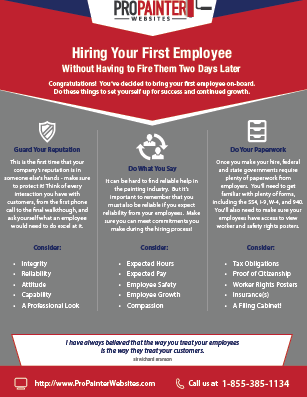Have You Reflected On Why Your Paint Outcomes Were Not As Prepared For? Discover The Typical Mistakes That Could Be Jeopardizing Your Efforts
Have You Reflected On Why Your Paint Outcomes Were Not As Prepared For? Discover The Typical Mistakes That Could Be Jeopardizing Your Efforts
Blog Article
Author-Raynor Faircloth
When you're preparing to paint your wall surfaces, it's very easy to neglect some crucial information that can make or break your project. You might think selecting any type of paint will certainly do, or that surface prep work isn't required, however these choices can lead to discouraging results. You'll wish to prevent typical mistakes like overwhelming your brush or rushing the drying time in between coats. Recognizing these errors can save you effort and time, yet there's even more to think about if you want a remarkable finish that lasts. Let's discover what you might be missing.
Selecting the Incorrect Paint
Selecting the appropriate paint is essential for achieving a smooth, expert surface on your walls. If you pick the incorrect type, you'll rapidly find yourself encountering concerns like peeling, fading, or irregular color.
Beginning by thinking about the paint's base. Water-based paints are wonderful for easy cleaning and quick drying, while oil-based options are optimal for sturdiness in high-traffic areas.
Next, think of the surface. Matte surfaces conceal blemishes well yet can be tough to tidy. Satin or eggshell coatings use an equilibrium between visual appeals and washability, making them appropriate for many rooms.
For locations vulnerable to wetness, like kitchens and bathrooms, pick a semi-gloss or gloss paint, which resists mold and mildew and mildew.
Don't forget to check the color. Test examples on your walls to see just how they search in different illumination throughout the day. Illumination can drastically transform exactly how a shade shows up, so this step is crucial.
Skipping Surface Prep Work
Among the largest blunders property owners make is avoiding surface area prep work before paint. You could assume you can simply get hold of a brush and beginning, yet that'll bring about a less-than-stellar coating. Correct prep is crucial for a smooth and long-term result.
First, evaluate your wall surfaces for any type of flaws like splits, openings, or peeling paint. Filling up those spaces with spackle or caulk ensures a consistent surface.
Don't forget to sand the location once it's dry, as this produces a far better surface for the paint to adhere to.
Next, tidy your walls to eliminate dust, grease, and gunk. A straightforward blend of soap and water can do marvels. If your wall surfaces are particularly filthy, take into consideration using a degreaser.
Finally, using a guide is typically forgotten however can significantly improve the outcome, especially if you're painting over a darker color or a surface that's been previously painted.
A good guide boosts adhesion and assists cover any discolorations.
Improper Application Methods
Applying paint with the incorrect methods can bring about unequal insurance coverage and a discouraging finish. One common blunder is using the wrong sort of brush or roller. See to it you choose a tool that suits the paint type and the surface structure. For smooth walls, a fine-nap roller works best, while textured surface areas might call for a thicker nap.
One more issue is using excessive paint at the same time. Instead, use slim, even coats. This not only protects against drips yet additionally makes certain far better adhesion. If you notice runs, don't worry-- just take a brush and smooth them out immediately.
Additionally, keep in recommended you read to preserve a damp edge. This indicates overlapping your strokes while the paint is still wet to stay clear of noticeable lines.
Ultimately, avoid paint in direct sunlight or high humidity, as this can trigger the paint to completely dry also swiftly, resulting in blistering.
Final thought
To sum it up, avoiding typical painting mistakes can make a substantial distinction in your task's outcome. Always select the best paint for the work, never ever avoid important surface prep work, and use proper application strategies to guarantee a smooth finish. Take your time in between coats and do not overload your brushes or rollers. By following these ideas, you'll attain a professional-looking outcome that you can be happy with in your home. Happy paint!
